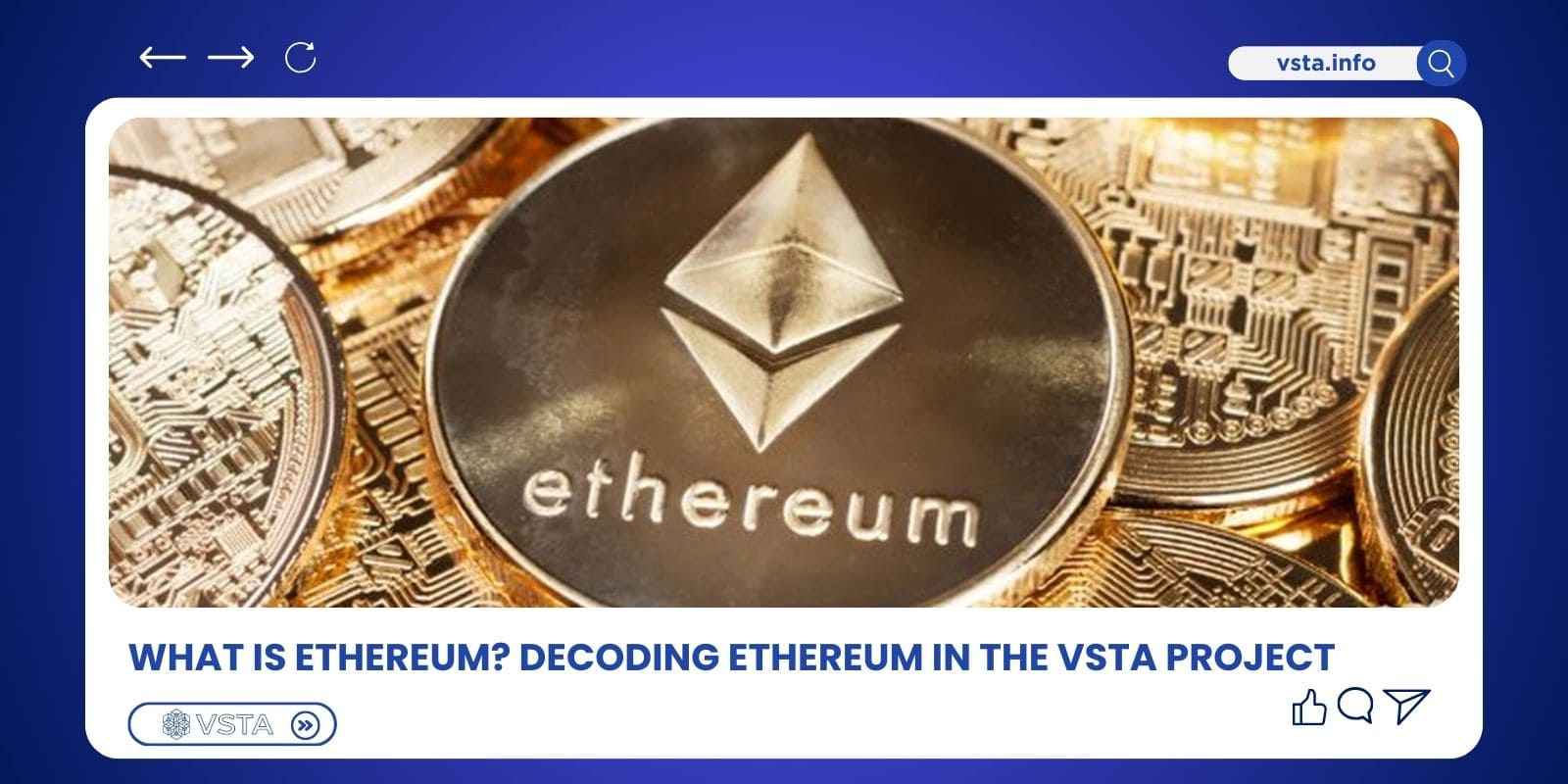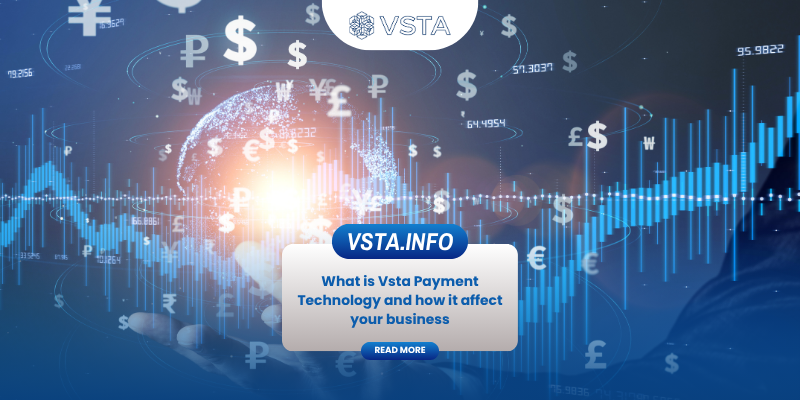Ethereum (ETH) is like an asteroid in the vast Blockchain universe. Although it came later, it quickly rose to become a formidable competitor in the investment market. More importantly, ETH has been chosen by Vesta Finance (VSTA) as the primary collateral asset. Its purpose is to generate the stablecoin VST and participate in borrowing – collateral – liquidation activities within the ecosystem. So, what is Ethereum that makes it so special? Let’s explore the details with VSTA in the article below!
Basics of Ethereum
What is Ethereum (ETH)?
So, what is Ethereum? The answer is that Ethereum is an open-source technology built on the Blockchain platform, where every transaction on the Ethereum network is recorded in a block. Each new block created links to the previous ones, ultimately forming an immutable chain.
Ethereum allows decentralized applications (Dapps) to run on its platform. The Ethereum Blockchain network functions like a global supercomputer, consisting of hundreds of thousands of devices connected worldwide to maintain its computational state.
History of Ethereum
Ethereum was created in a context where the initial structure and database of Bitcoin had become outdated and consumed too many resources. During this period, not only Ethereum but also many other coins were developed with the purpose of improving the old data structure and adding more functionalities to the Bitcoin network.
However, Ethereum stood out above them all. It was conceived by a 19-year-old Russian programmer named Vitalik Buterin. He announced the idea of Ethereum at the end of 2013 and developed the project together with a team of other developers. In 2014, the first version of Ethereum was introduced.
Ethereum was officially launched in July 2015 when the main network went live under the name Frontier. This was the first step in opening up the Ethereum network to developers, allowing them to deploy decentralized applications. To fund the project, Ethereum organized an Initial Coin Offering (ICO) in August 2014. During this ICO, Ethereum sold tokens called Ether (ETH) to investors, raising approximately 18 million USD.

What is Ethereum (ETH) in VSTA?
In addition to understanding what is Ethereum, users should also know the role of ETH in VSTA. Ethereum in Vesta Finance (VSTA) is considered the main collateral asset within the system. Users deposit ETH into the VSTA protocol to serve as collateral. Based on the amount of ETH locked, they can mint Vesta Finance stablecoins – the native stablecoin of the ecosystem.
Moreover, the value of ETH is constantly monitored through oracles. If the price of ETH drops and the collateral ratio falls below the safety threshold, the loan may be liquidated. Since ETH is one of the most liquid and widely used assets on Arbitrum, VSTA has chosen it to ensure both security and ease of liquidation.
Decoding the Role of Ethereum in Vesta Finance (VSTA)
In the Vesta Finance (VSTA) ecosystem, Ethereum plays the role of collateral, serving as the basis for borrowing, repaying with ETH, and liquidation in case of risks. The specific roles are as follows:
Ethereum (ETH) as the Main Collateral
When it comes to “What is Ethereum?”, most investors immediately think of the second-largest cryptocurrency after Bitcoin, widely used across DeFi projects. However, within the Vesta Finance (VSTA) ecosystem, ETH is not only used for transaction fees but also serves as the primary collateral asset. Users can deposit ETH into the platform to mint the stablecoin VST. This allows ETH holders to leverage their assets without having to sell them.
Compared to other collateral assets such as gOHM, renBTC, or GMX, ETH offers higher liquidity. For instance, renBTC depends on bridge mechanisms, while gOHM and GMX have strong communities but relatively low trading volumes. ETH, on the other hand, is both widely adopted and easy to liquidate when necessary, ensuring greater security for the entire Vesta system.
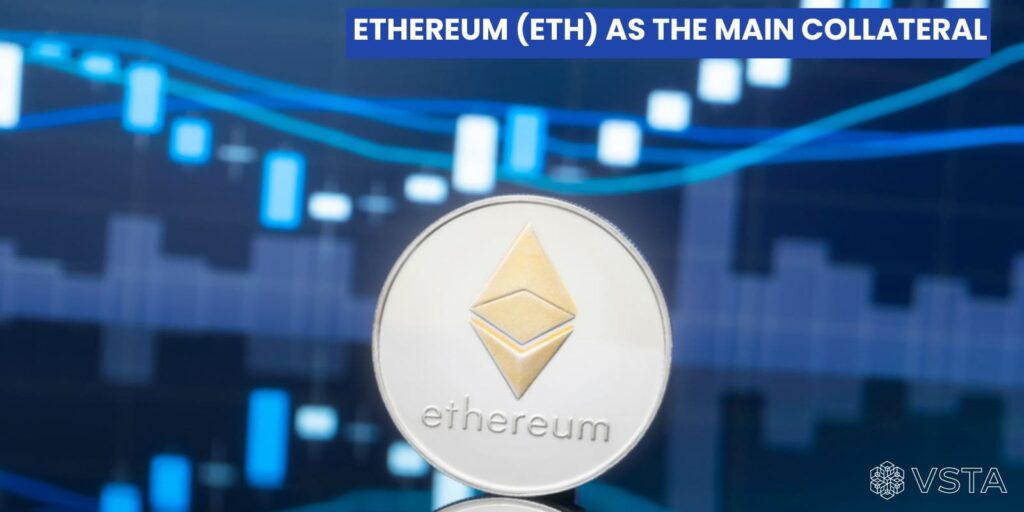
Building the Borrow–Repay Mechanism with ETH
The standout feature of Vesta Finance lies in its ETH-based borrowing mechanism. Users simply deposit ETH into a Vault, and the system—based on the market value of ETH—will allow them to borrow a corresponding amount of VST. For example, if a user deposits 2 ETH at $3,000/ETH, they can borrow around 3,000 VST with a safe collateral ratio. This mechanism enables ETH holders to unlock new liquidity without selling their ETH.
Once you know what is Ethereum, the refund process is very simple. To withdraw the collateralized ETH, users must repay the borrowed VST along with any related fees. Once the debt is fully settled, the ETH is unlocked and returned to the user. With this mechanism, Vesta Finance creates a capital cycle of deposit ETH – borrow VST – use funds – repay loan – reclaim ETH, helping investors maximize the efficiency of their assets.
Risks and Liquidation When Using ETH
Despite understanding what is Ethereum, there are still risks involved in using ETH in Vesta Finance. ETH is highly volatile, and when its price drops, the collateral ratio may fall below the system’s minimum requirement. At that point, the Vault triggers the liquidation mechanism, and the borrower’s ETH is sold to maintain the stability of the VST stablecoin. Users risk losing part or even all of their collateral if they fail to manage risk properly.
For instance, if you deposit 1 ETH worth $3,000 and borrow 1,500 VST, but the ETH price falls to $1,800, your collateral ratio will drop to a dangerous level. The system will immediately liquidate your position to protect VST. The key takeaway is that when participating in ETH on Vesta Finance, users should maintain a collateral ratio higher than the minimum (typically 150–200%) and monitor ETH price fluctuations regularly.
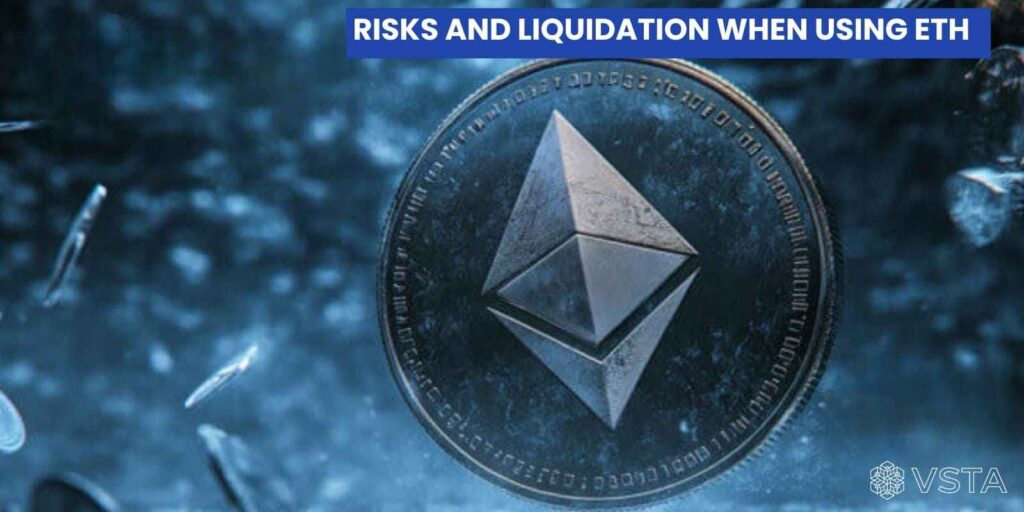
The Outstanding Potential of Ethereum When Combined with VSTA
Beyond its essential role or what is Ethereum, ETH also carries significant potential that users should be aware of. Below are the key advantages and challenges of Ethereum when integrated with VSTA:
Outstanding Advantages
When exploring what is Ethereum in the DeFi context, many investors realize that ETH is always the top choice thanks to its strong liquidity. Within Vesta Finance (VSTA), ETH is considered:
- An optimal collateral asset because it can be easily bought, sold, converted, and liquidated on the market. This ensures the system always has sufficient resources to handle cases where borrowers fail to maintain safe collateral ratios.
- A cryptocurrency backed by a massive global community of millions of holders and developers. Integrating ETH into Vesta allows the project to leverage the strength and trust of this community.
- A safer and more reliable option for users, since ETH is a high market-cap coin and carries fewer risks compared to less popular tokens. This factor helps Vesta Finance build credibility and attract more users to its services.
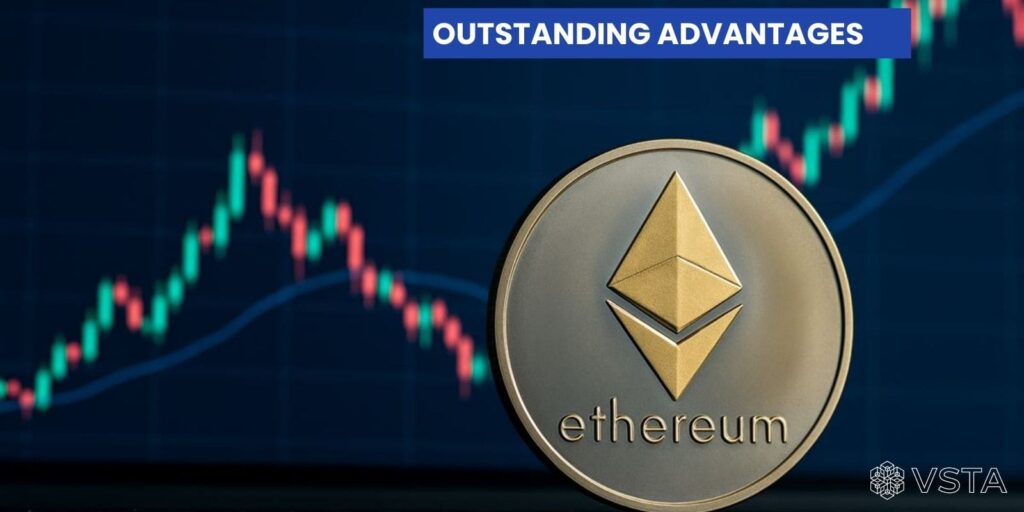
Challenges of ETH When Combined with Vesta Finance
Everyone knows what is Ethereum – it is a cryptocurrency with highly volatile price movements. When the market declines, a rapid drop in ETH’s value directly impacts collateral and can easily trigger liquidation. Therefore, users who fail to maintain a safe collateral ratio face significant risks of capital loss.
In addition, ETH on Vesta Finance must also confront fierce competition from major lending and stablecoin platforms such as MakerDAO (DAI), Aave, and other DeFi protocols. These competitors also allow ETH to be used as collateral for borrowing stablecoins, and many of them have long-standing ecosystems with large user bases. As a result, the challenge for Vesta lies in creating unique value and attractive incentives to retain users in the long term.
Should You Use Ethereum in VSTA?
Many investors wonder what is Ethereum and whether ETH should be used in Vesta Finance. The answer depends on each person’s financial goals and strategies. For those who are already familiar with DeFi or long-term ETH holders, participating in ETH on Vesta Finance can bring significant benefits. Instead of letting ETH sit idle in a wallet, users can leverage it to mint VST—unlocking new capital for investment or trading without having to sell their ETH.
Ultimately, whether or not to use Ethereum in Vesta Finance comes down to each investor’s risk appetite. If you clearly understand what is Ethereum, master how the mechanism works, and apply sound risk management principles, ETH can indeed become an effective capital optimization tool within Vesta’s DeFi ecosystem.
Conclusion
Through this article, you now have a clearer understanding of what is Ethereum and why ETH plays an important role in Vesta Finance. Stay tuned with VSTA to gain more insights and explore other promising investment opportunities in the ecosystem. Especially, don’t forget to contact us immediately if you still have questions about what is Ethereum!
